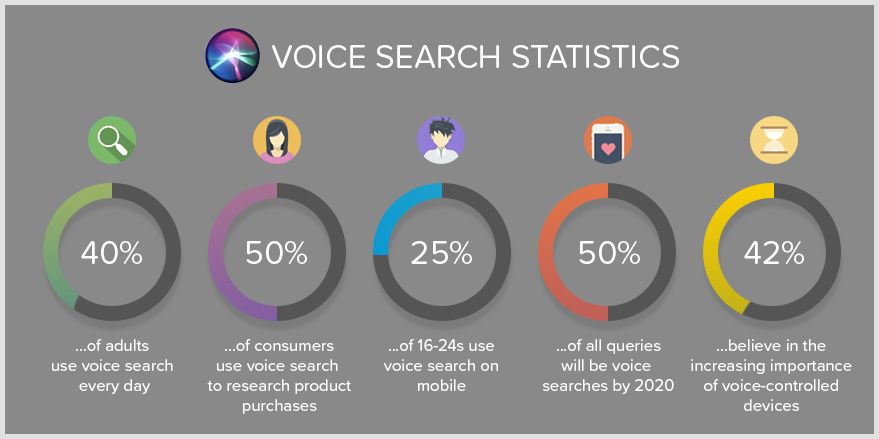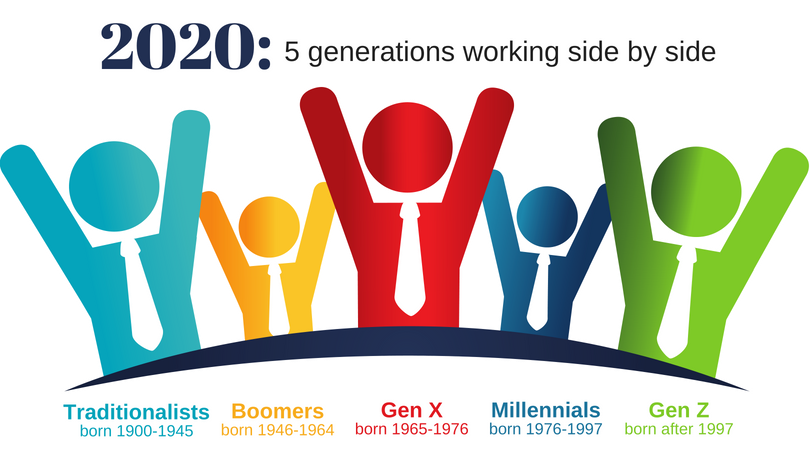What’s it all about?
In the digital era, keeping up with the pace of change and remaining competitive can feel a relentless task. Being a best-of-breed organisation means constant reinvention to stay on the right side of change, and this presents both opportunities and threats. Organisations face external pressures ranging from squeezed pricing and margins to unexpected competitors, new monopolies to new talent requirements all pressures that force them to adapt faster than ever before. Digital transformation is a key part of this adaptation, and it’s something that touches on a growing number of internal processes. Not only are the rewards for success greater because of this, but the price of not innovating is leaving some organisations trailing ever further behind, with the consequences greater than they’ve ever been. So, the big question is: what will 2019 bring for the next generation digital workplace? In 2018, analytics was a big focus, and storytelling continued to reign supreme in place of corporate top-down communications. We saw companies move more and more applications to the cloud, and basic AI began to make workflow and process automation smoother. In 2019, we’ll see the stakes raised even further in this already high-stakes game. These are our predictions.
Digital Workplace Trends 2019
- Evergreen employee engagement
- Progressively intelligent applications
- More customisation of cloud applications
- Voice-driven search
- Data authenticity and maintaining employee trust
- Generation Z user workplace takeover
- More diverse and fragmented workplaces
- Smarter employee training & learning capabilities
- Shift from IT ownership to facilitation
- Increased security and GDPR
1) Evergreen employee engagement
The importance of employee engagement to an organisation can’t be emphasised enough. The implementation of employee engagement strategies means increased workplace productivity, reduced staff turnover, better customer relationships and greater profit share. It’s no longer enough simply to ask employees to complete a survey once a year; and yes, many organisations still do this!
Organisations need to be continually pulse checking and improving employees experience.
At the moment, the most popular way to do this is using the employee ‘pulse survey’, a fast and frequent survey that gives immediate insights into how the company is doing, as well as providing a feedback mechanism to management. It’s a bit like the way you’re asked for your feedback each time you’ve flown from a UK airport.
The pulse survey not only enables organisations to start treating their employees more like their customers, but it also enables companies to react quickly to insights gained and implement them efficiently. Another big advantage of them is that it shows employees that you value their opinions and care about their experience of working for you. They can be an important part of creating a company culture that cares about employees and promotes their wellbeing.
Pulse surveys aren’t new, but our prediction for 2019 is that they’ll evolve into something bigger and more agile. In short, rather than being done in isolation, they’ll start to be integrated into an iterative evergreen employee engagement ecosystem.
But how?
Intelligent organisations already have agile models to address employee feedback, usually following a process that goes something like this:
- Pulse Check
- Measure
- Action
- Implement
- Repeat
Excelling at this, authentically and at scale, requires sophisticated solutions creative toolkits that can handle near real-time employee relations, incorporating workflow, automation and analytics. That doesn’t necessarily mean organisations will need an expensive bespoke implementation to achieve this it can be as simple as configuring some workflow and business logic to existing systems.
This trend is all about businesses becoming more agile at gaining and effectively addressing employee feedback. The outcome: a more open and inclusive culture in which employees feel happier, more valued, and safe to express their concerns.
2) Progressively intelligent applications
It’s not just employee relations that organisations need be able to address en masse. How do you provide any kind of bespoke service at scale? The answer: artificial intelligence.
The rise of AI is all over the headlines these days, with smart applications such as Amazon’s Alexa and Apple’s Siri already a routine part of our day-to-day lives. Another example of AI already in common use is intelligent search: goal-oriented search that anticipates users’ needs, as seen on Google, Facebook and LinkedIn. What s more, chatbots are already taking over some of the burden of customer service by addressing routine problems through a realistic conversational experience.
In 2019, people expect these capabilities in the workforce as well, which brings us back to employee engagement. There s huge potential for digital assistants to act as a digital twin, taking over repetitive tasks and freeing up employees time for more valuable activities. Successful organisations redeploy AI to complete these mundane tasks and transform employees into knowledge workers’, with the HR department acting as the powerhouse behind this change.
You need AI to be competitive, because make no mistake your competitors are probably already using it. AI doesn’t need to be a threat; it’s an opportunity, providing you have a clear enough understanding of your business maturity and where the opportunities are for capitalising on new technology. Increasing the intelligence of your existing processes, particularly by incorporating machine learning, lets you streamline workflows, improve user experience, anticipate the needs of your workers and deliver training. We’ll come back to this later.
Read more on this subject here.
3) More customisation of cloud applications
Cloud technology is considered to be the underlying force that’s changing most businesses and their operating models. It’s changed the traditional on-premises models for infrastructure, platforms and software, enabling all these technologies to be service-based and typically consumption-based or ‘pay-per-use’. The ‘plug and play’ virtues of the cloud have reduced the expense and lead time associated with getting projects or capabilities off the ground, and there are numerous cost-effective options available on the cloud these days (app stores, for example).
One of the huge benefits of this model is that organisations don’t have to fit with the technology, they can choose the technology that fits best with them. They’re no longer forced into going with the giant technology providers; they can choose providers of bespoke micro applications that exactly meet their needs.
Of course, if they do decide to go with one of the software giants and their cloud suites Microsoft 365, G-Suite or Salesforce, for instance they’ll benefit from the fact that consumer expectations around flexibility and a bespoke service mean that APIs are more open than ever. That means that almost anything is now possible by customising cloud suites, their applications and utilising plug-ins.
Although this raises interesting questions around on-going support for customised suites, the great thing about this is that cloud customisation can now reflect the fact that no two organisations are the same. Each customisation can be truly unique and tailored to the needs of the individual business. Rather than building from the ground up, smart organisations are now spending their time customising existing software and using any spare funds and time on innovation.
On this note, a mistake that some organisations make is that there are so many cloud-based applications they can deploy that they end up with a fragmented, noisy space. Sometimes the best solution is simply customising the cloud within the same tooling suites to give the enterprise a joined-up user experience with a fraction of the time and cost considerations.
4) Voice-driven search
Most of us have heard the voice search statistics. By 2020, 50% of searches will be voice searches (comScore) and by 2020, 30% of searches will be performed without a screen (Gartner). In 2017, 13% of households owned a smart speaker and by 2022, that’ll be 55% (OC&C Strategy Consultants).
Once again, consumer products such as Google Assistant, Apple’s Siri, Microsoft’s Cortana and Amazon’s Alexa are driving business expectations, not only from the point of view of customers but also from the point of view of employees. Google’s strategy is leaning increasingly towards voice search, too, which is changing search engine optimisation strategies and necessitating re-optimisation.
Voice search itself isn’t new, but the challenge organisations face in 2019 and beyond is how to integrate and optimise this technology intelligently and intuitively. The sooner businesses are able to respond and adapt to this new technology, the better the position they’ll be in, because voice-driven search and stream of conscious commands epitomise the future.

Credit: Ads Triangle
5) Data authenticity and maintaining employee trust
In 2018, it felt as though all we were hearing about was ‘fake news’. While it’s not a new concept, it’s now spreading to other areas of our lives, including the digital workplace. Whether it’s commenting on a news story or retweeting a post, almost anyone can now be a publisher or ‘content creator’, transforming the digital workplace into a collaboration platform.
This ‘democratisation of publishing’ opens up organisations to numerous complexities. How do you maintain a single source of truth when there are so many contributors? How do you handle an ever shorter feedback loop? How do you build trust in leaders and colleagues, and attribute expertise to content and authors? Increasingly, organisations need to act as curators of content, with trust and authenticity as top priorities.
Historically, trust used to be top-down, but it then evolved to a more peer-to peer-model, to smaller local networks. The trend for storytelling is at odds with this, and doesn’t tend to lead to trust. These days, the nature of trust has fundamentally changed; this year’s Edelman Trust Barometer shows that people focus their trust on what they can control, with 75% trusting their employer as opposed to just 47% trusting the media.
TripAdvisor is one of my favourite examples of how an organisation can deliver authenticity and cut through the noise. It’s built in a large peer-to-peer environment, and feedback and reviews are great mechanisms for creating valuable and accurate information.
This trend was already emerging in internal organisations in 2018, and in 2019 the trend is more about the value and importance of the ‘local network’. Although many sites still don’t yet focus enough on the local network and how we relate to one another, some applications are going further to look at your connections and how far removed you may be from someone. LinkedIn is a great example of this with its degrees of separation, and Facebook has a similar level of insight with its ‘friends of friends’.
Read more about this subject here.
6) Generation Z user workplace takeover
There are so many generations coexisting in today’s workplace, the result of ageing populations and longer life expectancy. We’ve heard lots about Millennials over the last few years, but there’s now a new generation coming to the fore. So who is Generation Z whom experts predict will make up 25% of the workforce by 2020 and what’s the effect of their increasing prevalence in the workplace?
Gen Z is anyone born in 1995 or later, and they have a number of key attributes many of which stem from having grown up surrounded by technology. It’s no surprise that these ‘digital natives’ are said to be more technologically proficient, quicker at processing information and more discerning of its origin; but more interestingly, they’re also steering away from traditional ways of working, with a more entrepreneurial bent. They’re people who need incentives, and who are adept at hunting out the best deals.
Adapting the workplace for this new generation is going to mean ‘Collaboration 2.0’: in other words, going beyond vanilla collaboration technologies and platforms to nourish the natural independence and competitiveness that characterises this generation, without alienating the other generations it co-exists with. Getting this balance right is going to be one of the key challenges for workplace professionals in 2019 and beyond.
Appealing to these digital natives isn’t about deploying constant digital disruption; it’s about how organisations can be digitally fit and sustainable. Gen Z want a sense of purpose in their work, and companies will need to work harder to create clear policies around sustainability, work/life balance, and diversity and inclusion.
Explaining company culture will be about living and breathing it, with existing employees as ambassadors Gen Z are no fools, and will spot lack of authenticity a mile off. That evergreen employee engagement ecosystem I mentioned earlier will be more important than ever, giving them a feedback mechanism that plays to their independence. Tools such as gamification can help increase engagement by appealing to their competitive side.
Leadership will play a significant part in achieving these changes, and company branding will also need to be appealing to attract the top talent. Demonstrating exceptional workplace culture needs to be done consistently with reputation management and promotion across all digital channels, both internal and external.

Credit: Alabama Media Group
7) More diverse and fragmented workplaces
I’ve already noted that the workplace is more diverse than ever thanks to the fact that multiple generations work alongside each other. This is part of a general trend towards greater diversity in the workplace, which puts the onus on employers to be inclusive in addressing the needs of workers young and old, from all ethnic backgrounds.
With the state retirement age increasing to 66 in 2020, and further increases expected, many older, more experienced employees will be continuing to work not because they want to, but because they have to. This means employers will need to work harder to keep these employees happy and engaged again coming back to the importance of my first point about evergreen employee engagement ecosystems.
In this age of more diverse, fragmented workplaces, some companies are turning to software to solve problems of integration and inclusivity, but unfortunately, this doesn’t necessarily help and can actually make it worse by creating more silos.
Many organisations spent 2018 and will continue to spend 2019 trying to solve this problem with more and more integration, allowing the employee to perform most work from the same platform. But it’s almost impossible to manage all these tools and channels efficiently, or financially viably and that’s without even touching on how to find and maintain the appropriate skillsets.
The more successful organisations are those who create a digital workplace where everyone can work effectively in the same technology stack. In 2019, we’ll see more and more organisations delivering customisation for different audiences within the same suite, such as Microsoft 365 or G-Suite. This has numerous advantages, including a single set of licence fees; reduced skillset requirements to support, develop and customise; a single point for upgrades; consistent user experience, and so on.
But the success of any digital workplace goes far beyond this. It creates a workplace culture that promotes collaboration and open communication a culture in which employees of all generations and backgrounds feel they’re treated as individuals, because the technology now exists to support this. With the help of the latest AI technology (as I touched on earlier), suites can be customised to meet the challenges of diversity and fragmentation.
Read more about this subject here.
8) Smarter employee training & learning capabilities
As we’ve already seen, while many individuals and companies are worrying about the threat of AI and how it will disrupt their businesses, intelligent organisations are embracing the opportunities it brings. In 2019, we’re starting to see the effects of this in increasing investment in training and reskilling, with AI developments meaning that vast numbers of workers will need new skills.
As I noted earlier, with automation and machine learning enabling greater efficiency, changing processes and ultimately transforming the nature of work, organisations will need to prioritise transforming their employees into knowledge workers who are increasingly focused on innovation and creativity.
It’s a common misconception that there’s a specific type of employee who’ll be most impacted by these changes; mainly, it’s wrongly believed, employees whose daily jobs involve more manual tasks. This couldn’t be further from the truth: all jobs will be changed by the advent of AI.
AI helps companies to expand their offerings for both customers and employees. Perhaps there are services that would have been unaffordable before, but AI has now made cost-effective, for example. It’s facilitating smarter learning and training capabilities, which creates a more efficient, productive workplace and enables employees to enjoy a healthier work/life balance crucial for attracting top talent and thereby remaining competitive.
Even better, AI-based data mining tools and business intelligence applications can be used to create bespoke, user-friendly learning tools tailored to individuals rather than groups, delivering a personalised experience with reduced training costs. Tools can make use of up-to-date learning methods to create the skillsets the business needs, whether that’s self-learning via YouTube and Google or using gamification to play to employees’ competitive streak.
9) Shift from IT ownership to facilitation
While in 2018 we saw the rise of HR as a key driver in the digital workplace, in 2019 we’re seeing the increased in importance of IT being the glue that holds together an organisation’s digital strategy. Many are still preoccupied with where digital fits into the traditional structure, with the typical tug of war being carried out between Comms and IT the greatest battleground, of course, being whose budget it lies within and who should pick up the bill when the investment pot inevitably runs dry.
Over the last couple of years, many organisations have tried to solve this issue by creating a new ‘digital’ function, headed up by a new job role such as ‘chief digital officer’ or similar. However, while this set-up works really well for some organisations, it’s by no means the only model.
We’ve found IT lead consortiums particularly effective, with equal representation from Comms and HR and joint accountability. This is a perfect example of where three heads are better than one, with each head bringing their own skills. IT is often best placed as the facilitator of these type of consortiums, as there will always be certain tests that need to be met within an organisation before new technology can be rolled out and implemented. Is it strategic? Is there something else in the organisation that performs similar function? Can it be supported by existing infrastructure, or would a wholesale upgrade be required? These are all questions that need to be asked.
It is, of course, completely understandable that other departments don’t want to be caught up in IT red tape and trust me, I’ve been there before! But the answer is not creating pockets of duplication, overlap and expense, as this ultimately just creates more noise. IT should be responsible for creating an agile culture with continuous experimentation, thereby facilitating innovation and engagement. The key is not so much ownership, but how IT can facilitate such a culture to help the organisation thrive in this digital era, where change is the only thing that is a constant.
Read more on this subject here.
10) Increased security and GDPR
GDPR was the talk of 2018, and in 2019, we’ll see the subject of data and network security continue to grow in importance as organisations implement the next generation of features, such as personalisation, social collaboration and recommendations, which require consent for data storage. Within the workplace, employees’ personal data (name, address, phone number, IP address and so on) must be safeguarded from cyber security risks and potential data breaches particularly when workers are bringing their own devices to work and connecting them to internal systems.
All this is vital in view of the fact that cyber attacks are on the rise. Data breaches are widely reported in the media, and cybersecurity has become a top priority for businesses. Blockchain will be a key ally here, as it gives organisations a secure, transparent platform to support data protection solutions.
So where does that leave us?
2019 not only sees the extension, deepening and new implementations of themes from 2018, but we’re also seeing many new innovations for the digital workplace. Ultimately, many of them are about happiness and saving time in our personal and professional lives, something that creates valuable productivity changes as well as feeding into the priorities of the next generation of workers.
Whatever stage you may be at on your journey, there are many simple, cost-effective strategies to get you further towards your digital vision, with company culture at the heart of this. Don’t be afraid to conduct little experiments to get the innovation that’s right for your business; you need to know your customers and employees and be inspired by the capabilities of your business.
Time to achieve your digital vision
Get in touch today to find out more about the practical solutions we can deploy to help you achieve your digital vision for your organisation.




